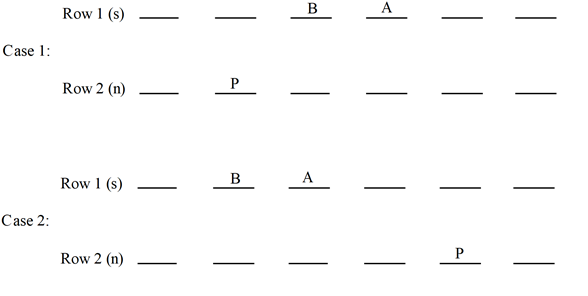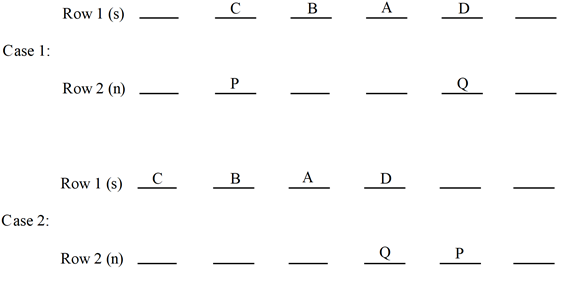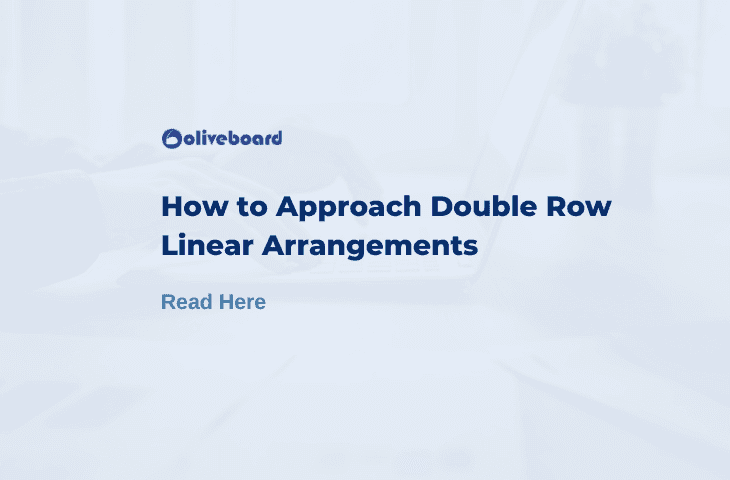In any bank preliminary exams, we can expect around two sets of seating arrangements. Double row linear arrangements is a common type of seating arrangement puzzle. In this article, we will discuss about double row linear arrangements and look at some tips and tricks to solve this type of puzzles.
How to approach double row linear arrangements?
In double row linear arrangements, there will be two parallel linear rows. The persons in the two rows may face the same direction or may face opposite or different directions, which will be generally specified. If the persons in the two rows are facing opposite directions and the persons in one row are facing north direction, then the persons in the other row will be facing south direction.
Attempt a FREE mock test of SBI PO here.
With the basic points arranged in the correct manner, you can easily solve this type of puzzles. Do not get confused with the directions faced by the persons of the two rows, in case, they are facing different/opposite directions. In some higher level puzzles which are asked in mains exams, even the persons in the same row may face different directions. In such cases, do note down the points correctly. For example, if A and B are neighbours of the same row but are facing different directions, then the persons sitting to the left of A will be sitting to the right of B. Similarly, if the directions faced by two neighbours A and B are not given, always consider all the different cases of A and B facing the same as well as different directions.
Attempt a FREE IBPS PO Mains mock test here.
Now, let us look at some Double row linear arrangements questions for a better understanding.
Practice questions:
Twelve persons were seated in two parallel rows containing six persons each, in such a way that there is an equal distance between adjacent persons. In row 1 – A, B, C, D, E, and F were seated and all of them are facing south and in row 2 – P, Q, R, S, T, and U were seated and all of them were facing north.
P was seated second from the end. One person was seated between P and the one who faces A. B was seated to the immediate right of A. C was seated third to the right of D. Q faces the one who sits second to the left of B. One of the immediate neighbors of D faces S. T was seated second to the right of S. One person was seated between E and the one who faces U.
1. Who was seated second to the left of U?
(a) S
(b) P
(c) R
(d) Q
(e) T
Attempt a FREE mock test of SBI PO here.
2. How many persons were seated between Q and the one who faces C?
(a) Three
(b) More than three
(c) None
(d) One
(e) Two
3. The number of persons seated between A and E was the same as the number of persons seated between _______
(a) P and T
(b) Q and R
(c) R and T
(d) T and U
(e) U and S
Attempt a FREE IBPS PO Mains mock test here.
Solution:
P was seated second from the end. One person was seated between P and the one who faces A. B was seated to the immediate right of A.
(Started with the person/variable whose position is fixed. Here P’s position is second from the end. So, we need to find more information about P)

C was seated third to the right of D. Q faces the one who sits second to the left of B.

Attempt a FREE IBPS Clerk mock test here.
One of the immediate neighbors of D faces S. T was seated second to the right of S. One person was seated between E and the one who faces U. (By reading and arranging it, we can get the final arrangement)
Hence, case 2 is invalid.

Answer keys:
- (c)
- (e)
- (d)
Double row linear arrangements are similar to single row linear arrangements just with a little more complexity. Practice more questions to get a better grip on this type of arrangement puzzles.
Study at your own convenience anywhere. Download the Oliveboard app now!

The most comprehensive online preparation portal for MBA, Banking and Government exams. Explore a range of mock tests and study material at www.oliveboard.in
